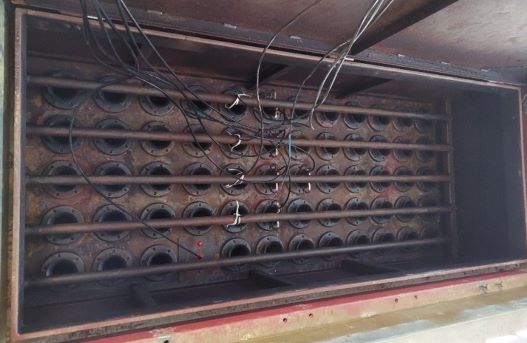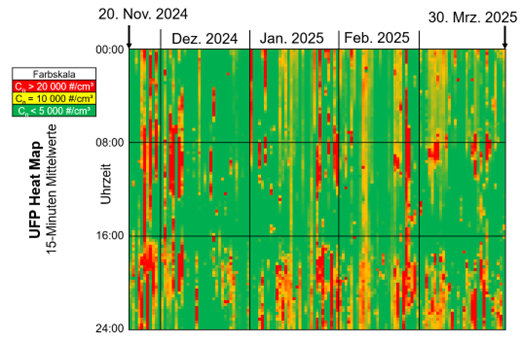The handling and separation of nanoparticles plays an important role in various technical processes. In the context of gas cleaning applications in power plants, nanoparticles (e.g. ash and soot) are generated during combustion processes and can be separated using electrostatic precipitators or baghouse filters. However, particle emissions are only monitored on the basis of gravimetric total dust concentrations (e.g. WGC-BREF) where even a high number of nanoparticles does not contribute significantly to the particle emission due to their small particle size. The mitigation potential of gas-cleaning technologies and the real emission of nanoparticles of industrial processes has not been investigated in detail.

Figure: Clean gas side of a baghouse filter and sampling probes
For small-scale combustion processes (e.g., domestic heating systems for houses or furnaces according to 1. BImSchV), gas cleaning technologies are only rarely applied and the exhaust is led unfiltered into the environment. The government-official limit values for particle emissions are also based on total mass concentrations that are not size-resolved and do not represent the actual emissions of potentially harmful (ultrafine) nanoparticles. This can contribute significantly to air pollution with ultrafine particles. Monitoring of ultrafine particles is becoming increasingly relevant in the context of the revision of the EU Ambient Air Quality Directive.

Figure: Temporally resolved profile of the UFP-concentration in a residential area
This research project deals with the mitigation of nanoparticle emissions in gas cleaning processes and the measurement of ultrafine particles in ambient air performing stationary and mobile indicative measurements. An important aspect of this work is the use of modern aerosol measurement technology.
